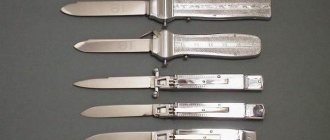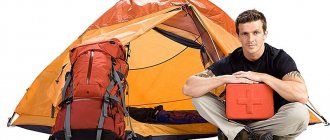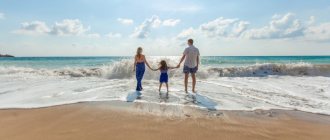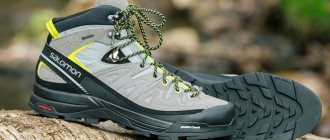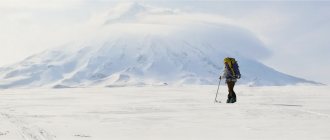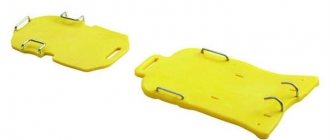The 20th century brought many new concepts and things into people's lives. Tourist equipment, clothing, and footwear were also developed. Nowadays, few people would even think of going hiking in regular sneakers. Tourists know that traveling requires special shoes. Originally invented as footwear for hiking, trekking boots have become a must-have for outdoor enthusiasts. To choose the most suitable option, you should familiarize yourself with the design features, advantages and disadvantages of various models.
Purpose
Trekking boots will help protect your feet from injuries, sprains, or even save your life on slippery slopes. For difficult routes, boots with good protection of the foot from unfavorable conditions - dampness, stones, impacts - are suitable. They can be worn on hikes of varying degrees of difficulty, fishing, in the forest, for a walk, or hunting. Such shoes can be used by special services to carry out combat and humanitarian operations, extinguishing forest fires, and clearing rubble during earthquakes. It should not be confused with climbing and rock climbing, intended exclusively for conquering peaks, but in everyday life it is too inconvenient to use.
For intelligence services
For hiking
Trekking boots: what are they?
Trekking boots are hiking shoes that help you navigate hiking routes safely. In some cases, it can protect the legs from injury, and even save lives when climbing mountain slopes.
Tourists usually prefer boots that protect the ankle from possible damage and sprains. These are distinguished by an increased level of protection in extreme conditions and a more robust structure. The special sole that is used in their production was developed more than 80 years ago by climber V. Bramani.
Trekking boots are hiking shoes that come in a variety of styles. They can be heavy or light, depending on what kind of hike you plan to wear them on.
As a standard, trekking shoes should be lightweight, have a high level of strength and wear resistance. A high-quality sole should comply with the rule of being wide and grooved with an excellent shock-absorbing layer that reduces the load on the foot. Boots must provide good support for your feet. To increase the level of security, a molded rubber or leather lining around the perimeter is often used. This finishing method helps to avoid injuries if you suddenly hit your foot on a stone, and will also allow the boots to last for a longer period.
Design features
What trekking shoes are is of interest to many outdoor enthusiasts. First of all, it is distinguished by a high level of protection and a strong structure. These qualities are achieved by the design features of the products.
Sole
The special Vibram sole for this shoe was developed by mountaineer Vitale Bramani after an unsuccessful trek on a difficult route in the Alps. Then traditional felt shoes with nails cost the lives of six climbers. Modern soles are multi-layered with rubber outsoles. The sole for women's models is usually lighter - made of cut rubber. They are usually used for light trekking. Men's boots have chunky soles designed to support the weight of a large man carrying a heavy backpack.
The most wear-resistant part of the sole, which takes on the main load during movement, is called the outsole. It should hold well on slippery stones, rocks, and bite into soft soil, providing reliable support. Mixtures for them are made from vulcanized rubber with the addition of various additives.
Engineers are constantly experimenting with compounds, adding glass, metal shavings and other elements to achieve a combination of wear resistance and tack.
There are two types of midsole - cast and cut. Cast is heavier, stronger, wear-resistant. It is used, as a rule, for difficult hikes to places with sharp rocky ledges, however, having considerable weight, it complicates an already difficult route. The cut one consists of several layers and is much softer. In the heel area, plastic material EVA or polyurethane is used for shock absorption. Polyurethane is now valued because it is more wear-resistant than ethylene vinyl acetate material, is not subject to chipping under heavy loads, but with all its advantages it is less flexible. To stabilize and stiffen all elements, a special plate, sometimes called a chassis, is placed on the midsole.
Top
The outer material is made either from genuine cow or yak leather, or from synthetic materials. The full leather upper is made for medium to heavy trekking. Good leather should have a thickness of at least 1.6 mm for better protection from moisture, low temperature, and abrasive loads. Leather shoes provide better protection from moisture and adapt to the shape of your feet over time. But it dries worse, when wet, it changes its structure and properties, and is also heavier than synthetic.
Synthetic upper helps reduce weight. Trekking shoes made of this material perfectly remove moisture from the inside and “breathe”. This fabric is often used for hot regions, or combined with leather inserts, trying to combine the best qualities of these materials.
In men's models, the upper part of the boots is often made of thick leather for heavy loads and heavy trekking, with the shoe weighing up to 3 kg. The color scheme has 1-2 colors. Women's ones are presented in a wide color palette, with an elegant ankle circumference. They are often equipped with synthetic or combined inserts.
Women's model made of natural suede
Men's leather mountain hiking boots
Insole
Insoles are responsible for the comfort of the foot. To make your feet comfortable, they are made anatomical or thermoformable. Sometimes inserts are made individually or orthopedic forms are used. The insoles are removable, which means they can be easily replaced with others. Narrower, softer, shock-absorbing and thinner models are created for women. Men's are thicker, with a small shock-absorbing layer. A comparison of their characteristics is given in the table.
| Men's | Women's |
| Wide last | Narrow last |
| Wide ankle | Narrow ankle |
| Narrow color palette | Wide range of colors |
| Lack of patterns | Patterns used |
| Rigid, non-bending sole | Less rigid sole |
| All sizes | Up to size 40 |
| Weak shock-absorbing elements | Enhanced shock absorption |
| Thick heavy insoles | Thin insoles |
| The upper is mostly leather | Wide range of synthetic and mixed uppers |
Narrow and wide last
Narrow insole for women's shoes
Wide insole for men's model
Purpose and features
First of all, the distinguishing feature of these shoes is their resistance to certain loads and conditions of a hiking trip. For example, for areas with high levels of humidity, boots are made using special membrane linings. For the warm season, mesh linings are used, and for cold winters, additional insulation is used.
For light mountain hikes, the best option is one that is not too high, even without a membrane, but it is important to pay attention to their protection from damage.
Similarly, one of the options for lightweight trekking boots can be sneakers. They are designed for light hiking, and the special sole provides excellent traction and prevents slipping while climbing.
Varieties
Like any shoes, trekking shoes have a certain classification. Recently, lightweight shoes have become more popular among experienced tourists. However, before purchasing it is still worth familiarizing yourself with the differences:
- Lightweight boots are very restrained in design and are usually below average in height. These are well suited for passing not too difficult routes.
- Medium-weight boots are characterized by rigidity, which means increased sole reinforcement and height. These are perfect for hiking for several days.
- Heavyweights offer excellent ankle support, excellent cushioning, and a high level of moisture resistance.
Attention! The type of footwear is determined depending on the type of hiking that is planned.
Additionally, there is a distinction between women's and men's trekking shoes: the difference is generally based on the width of the heel, foot and ankle height.
What to wear with
Since hiking boots qualify as footwear for active tourism, they should be worn with comfortable clothes in which you plan to go hiking. However, recently trekking shoes have been gaining popularity in people’s everyday lives, as they have a high level of comfort. Therefore, they can often be found within the city.
For trekking walks, it is best to choose durable shoes with professional and comfortable clothing, and for everyday use, it is preferable to opt for a more stylish option.
Demi-season boots go well with jeans and shorts, and are great for combining with a fashionable leather jacket or down jacket. In addition, they look great in tandem with a parka.
For hikes of medium difficulty, it is perfect for skiing suits. Firstly, they are very warm, and secondly, stylish design solutions for such clothes allow them to be used comfortably within city life.
What to look for when choosing
In order to purchase high-quality trekking shoes, you need to remember important rules that contribute to the right choice:
- It's better to choose boots that are a little larger than smaller.
- It is better to try on a thin wool sock.
- It is important to walk in your new shoes to feel if your heel lifts off the sole as you walk.
Likewise, it is important to pay attention to the following details:
- The tongue should be flush with the top of the shoe. This will allow you to cross small streams without getting wet.
- It is best when the laces are threaded through special loops.
- High quality protector.
- There should be soft padding at ankle level.
- The toe and back of the boot must be reinforced.
By following these rules, you can easily choose high-quality boots. In addition, you can absolutely always seek advice from a specialist if any difficulties or controversial issues arise.
Size
One of the most important parameters for hiking boots is their size. It is important that they fit as tightly as possible along the foot, but the toes must be free. It is better to try on shoes when your feet are “swollen” at the end of the day and with the socks that you plan to wear.
Important! Trying on hiking shoes is a must!
Experienced tourists recommend taking trekking shoes 1 size larger, or 2 sizes larger when choosing winter boots. This will allow you to wear a warmer sock underneath.
However, one should also take into account the suitability of shoes to the characteristics of the feet: length, width, instep. It is not recommended to purchase shoes if at least something causes discomfort when trying them on.
Material
Good trekking boots are usually made from leather or nubuck , sometimes combined with textiles to increase breathability.
A lot depends on the material: the weight and durability of the boot, its moisture resistance. Shoes for mountaineering and difficult routes are usually made from thick-grain leather, while lighter boots with a high level of air penetration are made from split leather. Shoes made of nubuck can be an excellent option - they have a high level of strength, flexibility and do not float.
Thus, choosing good trekking boots is an interesting process that will allow you to purchase an excellent item both for hiking and for everyday life in the metropolis.
What are Nariman boots?
How to stretch leather shoes?
Varieties
Trekking shoes are made for use in different conditions - from difficult mountain hikes to walks in the park. Therefore, the creators invented several types of shoes - sneakers, light and heavy boots, sandals.
Sneakers
Sneakers are always light, so they are used by light walkers for simple routes with good trails, where speed and not cross-country ability are important. They are low, so they are open to impacts from stones and branches and do not protect against ankle dislocation. Trekking shoes have thinner soles than boots. Feet are better ventilated in them, so these shoes are suitable for use in hot weather.
Hiking
Universal
Rocky
Light boots
Light trekking boots weigh much more than sneakers, about one kilogram. The plastic outsole ensures no slipping on the terrain - stones, mud, wet grass, and the hard toe and thick leather reliably protect against impacts. The high ankle keeps the leg from dangling.
Modern technologies make it possible to create lightweight and durable shoes that tourists gravitate towards. Such models are suitable for simple routes in mountainous and flat areas, multi-day hikes with a backpack.
For rocky terrain
For climbing routes
Women's model for light hikes
Heavy boots
These are very durable, waterproof, reliable shoes. It has very good ankle support, thick leather, and creates the necessary shock absorption. Suitable for challenging multi-day approaches over rough and marshy terrain. It often has a protruding welt for attaching crampons, which is important when moving along a glacier at high altitude.
The weight of boots for heavy trekking can reach 3 kilograms. That's why they are not so popular.
Model for harsh conditions of any type of terrain, weight 1.7 kg
Women's model for heavy mountaineering, weight 1.3 kg
Women's model for heavy trekking on the plains, weight 1.7 kg
How to choose trekking shoes
Once you already have an idea of what kind of shoes they are, you can start choosing your ideal pair.
- Initially, you need to decide on the purpose of the purchase. Are you going to go hiking, or will you conquer the peak? Of course, there are those who simply buy trekking shoes to wander through the forest and pick mushrooms, but this is most likely an exception to the general rule.
It is worth noting that mountain models can be used for easier walking and skiing. In addition, I know tourists who went on a ski trip in the Urals, wearing extreme plastic mountaineering boots, and their trips were combined with ski touring and telemark.
They explain this by the fact that they are so comfortable, the boots do not hinder movement and are light enough, thanks to which the guys walked longer distances.
- Decide how much money you are willing to spend. The price range is quite large. The cost of a pair of shoes depends on the “professionalism” of the model, manufacturer, collectible novelty, you can wait for the season of discounts or sales.
By the way, I want to ask you about discounts, how often do you buy things like this? Do you specifically wait until the end of January to buy something for 50% of the price, or do you buy it right away and are not interested in discounts? I look forward to your answers in the comments.
I would like to immediately draw your attention to the fact that in this article I do not urge you to purchase boots of a particular brand, here I am sharing my opinion and point of view, I do not want you to think that my blog is advertising a certain brand.
- In my opinion, Salomon has the most affordable and high-quality men's shoes.
You just need to buy leather models, despite the fact that new boots use higher quality suede, they will not last you longer. It is also worth highlighting the manufacturer Quechua, the price of their products is several times lower than Salomon, but they are not inferior in quality.
- Before I buy something, I actively read information about the product and search the Internet for people who have used it. So, I found a review from a guy who wrote that Quechua did not live up to his hopes while climbing the Caucasus Mountains. They are best suited for hikes at 2-6 thousand meters.
- Be sure to try on what you plan to buy. Even if you haven’t gone shopping for a long time, remember the road to Sportmaster. If you still prefer only online purchases, agree with the managers that you will pay for the goods at the post office, after trying them on. You can order several pairs of shoes at once, look at them all, choose the ones that fit, and send the rest back. Please note that you will spend money for return shipping not only money, but also shoes.
Before trying on your shoes, put on the socks you plan to take with you on your hike. Walk a short distance in your shoes, paying special attention to the ascent and descent.
I hope my article will give you some guidance before purchasing a new pair of shoes. Don’t rush into choosing, because you definitely aren’t buying a pair of trekking boots for one or two years.
Subscribe to the blog of the project “On the Edge” and always be the first to learn about all the new products in the world of tourism and more! See you soon!
Text - Agent Q.
Manufacturing materials
The outsole of hiking shoes is made of vulcanized rubber with the addition of various compounds that affect the abrasion, rigidity, wear resistance of the outsole, and stickiness. It should not slip on stones, thanks to its rugged texture, it can cling well to soft soil and self-clean from adhering dirt.
Trekking shoes are usually made with thinner soles, which are not suitable for loose walking on sharp rocks with a backpack, but are ideal for walking on trails with a light load. The thickness of the leather uppers of good boots should provide protection from abrasion and impacts from rocks. The thicker the skin, the better the protection from the cold. For hot climates, the upper of the shoe is made of thin synthetic or mesh materials that allow the foot to breathe without overheating on a long hike. In addition, synthetics dry faster when wet and are less susceptible to deformation.
Let's look at the latest know-how and what advantages they provide.
| Technologies | Benefits of use |
| 1-piece full-grain leather upper | The purest and most expensive material. Particularly wear-resistant |
| SuperFabric microplate composite fabric | Protection against cuts and punctures |
| Upper material Schoeller Keprotec with aramid fabric | Tear resistant, stretch resistant |
| Shin pads | Prevents sprains and dislocations |
| MFS Vacuum System | Crinkle foam inside prevents chafing in problem areas |
| Inner soft boot | Prevents chafing and dries easily. |
| Gore-Tex membrane | Removes steam molecules without letting water in |
| Bunion block | Special last for the foot with a protruding big toe |
| Torsion element | Increases structural rigidity |
| EVA | Very flexible material for heel cushioning |
| V-bracket hardware | Prevents the lace from loosening when it breaks |
1-piece full-grain leather upper
Schoeller Keprotec upper with aramid fabric
Technical climbing model with SuperFabric composite fabric
MFS Vacuum System
Gore-Tex technology
Bunion block
Torsion element
EVA material on the heel area
V-bracket hardware
Criterias of choice
Hiking shoes should be different from city shoes. Urban can be used for years in asphalt conditions, but crumble on the second day in the mountains. Hiking shoes are much stronger and have certain differences. It should be noted that modern youth, who understand what convenience is, wear trekking shoes all the time. The nuances of choosing trekking boots depending on the conditions of use:
- For very simple hikes without obstacles and a backpack, or for the city. Summer shoes for casual conditions include sandals, open-tops or lightweight sneakers with mesh uppers. They have a special anatomical shape and wear-resistant materials. For the cold season, winter shoes, represented by light boots, can be used.
- For light hiking, you can choose lightweight, soft trekking boots with a synthetic upper and lightweight cut out sole. Closed-toed sneakers are also suitable.
- For multi-day mountain hikes and moderately difficult terrain, the best shoes are trekking boots with good foot support that prevents dislocations and sprains. In addition, waterproof boots will better protect your feet when walking in muddy lowlands. In some cases, you can choose heavy models with a rigid sole and a fixed ankle. But a heavy trekking boot, if you go out on good trails, will be an additional weight hanging on your foot.
- Sports and extreme climbing. For this purpose, mountain boots with the ability to attach crampons are used. These shoes have increased rigidity, are equipped with plastic inserts and do not belong to ordinary hiking equipment.
- Hiking multi-day hikes, mainly in swampy and slightly rough terrain. This type of hiking requires hiking shoes with good water drainage, such as Gore-Tex membrane. Waterproof boots with good impregnation will be an invaluable help.
The choice of shoe size is critical after the type. Each person's foot is unique, and you need to remember this when choosing. Main selection parameters:
- the foot should not move in the lateral direction, but strong compression should be avoided;
- the gap can be about 1 centimeter in length, some take even more - this is done so that the fingers do not get injured on the descent, resting on the toe of the boot;
- The foot should be positioned comfortably.
It is best to choose shoes 1-2 sizes larger. A well-chosen pair does not pinch anywhere, it seems that they are made to fit the foot.
Trekking sandals for easy conditions
Lightweight sneakers with mesh upper
For simple hiking
For multi-day hikes of moderate terrain difficulty
For extreme climbing
For multi-day hikes in slightly rough terrain
Trekking shoes - what are they?
The trekking boots in the form that are available on the market today were born thanks to the hard work and ingenuity of a mountain guide. In 1937, a rubber sole was patented, which later became known throughout the world under the name “Vibram”. She, or her analogues, equip all classic trekking shoes today.
In addition to a specially rubberized sole and a special tread pattern, other high-tech materials are used in the production of the best trekking shoes, such as membrane fabrics (better known as Gortex) and high-strength aramid fibers (the leader is the DuPond brand Kevlar sales office).
Do you know what Gortex means? In your opinion, is this just a tribute to fashion or truly a technological breakthrough?
Today, the materials market is actively developing, and new types are being developed every day, so it is not surprising that in a year the purchased shoes will become unfashionable.
Today there are different models of shoes, but trekking boots stand out among them: summer and winter. Manufacturers also differ, but the leading position in sales is occupied by Salomon.
Before choosing a specific model, you should pay attention to their types. Although there is no official classification, and the “range of use”, even for different boots from the same company, is very, very blurry
Popular manufacturers
The topic of the best trekking boots is widely discussed in the press and on forums. Even if some of the other equipment is missing, boots should still be there. European and American manufacturers are intensively saturating the market, offering new developments in footwear, impregnation and care products. In this sea of variety, the task of choosing trekking boots is not easy. The highest ratings are from such well-known companies as Salomon, Adidas, Meindl, Nike, Asolo.
| Brand | Peculiarities | Description | Advantages | Flaws |
| Asolo | Vibram sole, Duo Asoflex | The sole increases maneuverability and stability, the shock-absorbing layer helps reduce impact loads and reduces the possibility of dislocations | Durability, large selection, reliable fittings, good ventilation, comfort | Weak textile inserts |
| Salomon | Gore-Tex orthopedic insoles | Vapor permeability increases, the load on the arch of the foot decreases | True to size, many winter models, easy lacing | Poor fittings, high price |
| Meindl | Special moisture-resistant and durable leather | Moisture resistance and wear resistance | Lightness, plasticity of the sole, comfort of the last and foam inserts, reinforced heel, strength, durability | High price |
| Adidas | Gore-Tex, Formotion, Continental. | Waterproof, good shock absorption, best shoe for grip quality | Wear resistance, improved grip on slippery surfaces, antibacterial insoles | High price |
| Nike | Polyurethane cage in toe, heel, flax and Kevlar fibers | Foot protection, wear resistance, vapor permeability, arch support | Impact resistant, toe and heel protection | High price |
Asolo
Salomon
Meindl
Adidas
Nike
Can it be used as an everyday
Of course, trekking shoes are something that can be used all the time. For summer urban use, you need to choose lightweight models with textile inserts and good vapor permeability. It is better not to wear membrane shoes at high temperatures - your feet will sweat. In the rainy season, on the contrary, it will be very comfortable. In city conditions, you can use sneakers with soft soles. Heavy mountain boots are extremely uncomfortable for everyday wear.
Lightweight for everyday wear
How to check quality and convenience
Before choosing the right trekking boots, there are a few guidelines to consider. It is better to visit shops after lunch. By this time, the foot will be slightly swollen, which will allow you to avoid making a mistake with the size. It is important to measure all available options, regardless of color and design. You need to walk around the hall for about 15 minutes, if you feel uncomfortable, it is better to abandon this pair - trekking shoes do not wear out well. This means that things will only get worse. The leg should not swing up, down, or sideways. You should pay attention to the width of the last and the feel in the heel area - it should not be fixed. If there is a stand in the hall that simulates an active load, you should definitely use it. The foot should move with the boot simultaneously during the descent and ascent. It would be a good idea to try side loading when descending.
It is better to measure on a trekking sock that you plan to wear on a hike.
If the seller is experienced, you need to discuss the tourism area, the expected season and the weight of the backpack - he will help you choose the right type of shoes based on the rigidity of the sole, the degree of fixation of the shin, the thickness of the leather and protection from the cold. If all the above parameters are selected correctly, then the boots will not let you down.
Trekking sock
Rating of the best trekking boots
| Nomination | place | Name of product | price |
| Rating of the best trekking boots | 1 | Lasportiva Boulder X | 11 990 ₽ |
| 2 | The North Face HIKE GTX II (TH016AMCNUG9) | 10 990 ₽ | |
| 3 | Asolo Nucleon GV | 8 113 ₽ | |
| 4 | Hanwag Makra Low GTX | 13 660 ₽ | |
| 5 | Oboz Beartooth | 16 640 ₽ | |
| 6 | Salomon Quest 4D 2 GTX | 10 143 ₽ | |
| 7 | Adidas Terrex Trailmaker GTX | — | |
| 8 | Salewa Mountain Trainer Mid GTX | 11 543 ₽ | |
| 9 | Meindl Island pro MFS GTX Wide | 14 973 ₽ |
Lasportiva Boulder X
Rating: 4.9
In first place in the rating are suede trekking boots with a protective rubber welt. The lining is made of a special non-slip mesh. The pair weighs about 800 grams, which indicates the lightness of the model. The lacing is quite long and allows you to perfectly fit the boot under your foot, and also, wrapping it around the ankle, under the ankle. Thanks to this, the fixation is in no way inferior to high-top trekking boots. As users note, the model is designed for narrow feet. The protector in the heel reduces stress on the knees and ankles and provides better traction on slopes. The midsole absorbs shock.
Advantages
- Vibram protector with IBS system;
- loop on the back;
- lace loop on tongue;
- do not rub and are almost not felt on the leg;
- excellent shock absorption;
- high strength;
- EVA insoles;
- wide size range - from 36 to 47.5.
Flaws
- not suitable for summer.
The North Face HIKE GTX II (TH016AMCNUG9)
Rating: 4.8
The second line goes to trekking boots made of natural nubuck and durable textiles. The model also has genuine leather inserts. Textile lining and insole. Equipped with a Gore-Tex membrane to ensure waterproofness and protection against the penetration of cold winds. Pebax midsoles feature Snake Plate units that provide shock absorption while also protecting your feet from heavy impacts with rocks. The standard Vibram outsole with XS Trek tread provides excellent traction. One shoe weighs about 455 grams.
Advantages
- removable Ortholite insoles with antimicrobial impregnation;
- good ventilation;
- textile mesh inside;
- Excellent shock absorption during active movements.
Flaws
- relatively expensive - 11 thousand rubles.
Care Tips
It is useful to remember a few simple rules that will help extend the life of hiking shoes:
- do not dry near an open flame;
- clean and wash after each field trip;
- dry by removing the insoles;
- apply moisture-repellent impregnation before and after cleaning shoes;
- follow the manufacturer's recommendations;
- wear it in for 2-3 weeks before the hike, taking short walks;
- for washing it is necessary to use special means;
- treat mold with vinegar solution;
- Do not wash shoes in a washing machine;
- You can speed up drying in the wind, under a fan, or periodically changing crumpled sheets of newspaper.
Oils not intended for use on leather should not be used. They can clog the pores, then the shoes will no longer allow air to pass through. Nikwax and Granger's products are recommended to be applied to wet skin. In this case, the material will be completely saturated. Water-repellent products from individual lines can be applied to dry skin.
The shoe membrane is practically maintenance-free - it is impossible to reach it. Over time, it becomes clogged, which does not affect the strength of the leather.
You need to remember that the right choice of trekking shoes will give you ease and freedom of movement. Proper care will make your boots reliable companions for many years.

